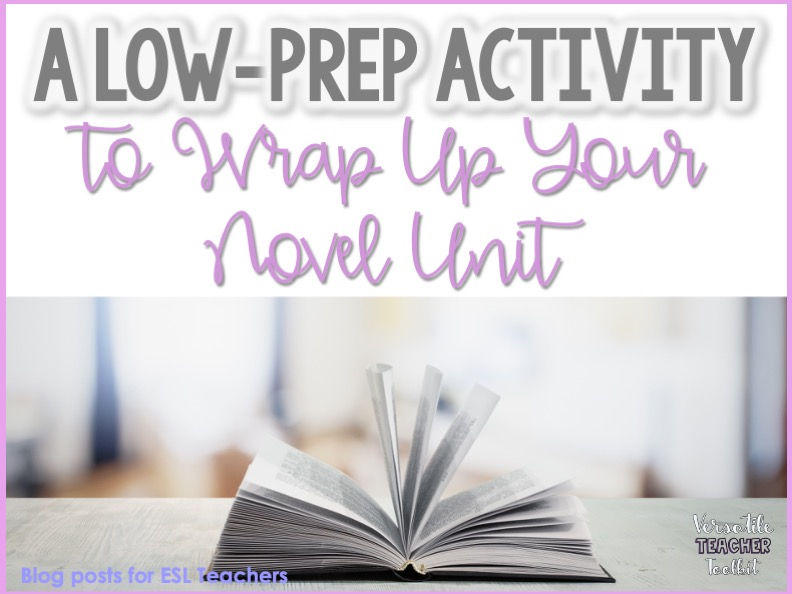Why You Should Use Picture Walk in Your Secondary ESL Class
- Kynga C.

- Jun 18, 2019
- 3 min read
Updated: May 1, 2022

What is Picture Walk?
Picture Walk is a reading strategy that enhances students’ comprehension of a text or story before reading it. With the teacher’s guidance, learners preview the text or the story in order to make predictions, anticipate the events, make connections with the text and infer what the story is about.
Through Picture Walk, learners acquire a better understanding of the text they are going to read. Picture Walk is an ideal differentiation tool you can use in any inclusive learning environment to support all your ESL learners. This reading strategy helps students to activate their prior knowledge, make predictions, visualize and voice their ideas about what the story might be about.
Why should you use Picture Walk in your ESL classroom?
It encourages learners to talk, thus, to develop speaking skills.
It allows students to practice vocabulary in context.
It enhances comprehension.
It allows learners to practice sequencing skills.
It builds inference skills.
It helps weaker students to grasp important elements of a story.
It supports second language acquisition and development.
How to incorporate Picture Walk into your curriculum?
As with any content you wish to explore with your students, you should:
Define clear learning goals and choose a text accordingly (theme-related, one allowing to practice vocabulary in context, one ideal for developing speaking, predicting, sequencing skills and building inference skills, one that has a moral lesson, etc).
Choose a text your learners can relate to.
Select a story that is rich in images or graphic features.
Make sure the text features an animated story that will encourage learners to talk.
How to support learners in building inference skills based on visual cues?
When using Picture Walk, follow the steps below:
Preview the cover, title, author and images with your learners.
Ask students to infer what the story is about by looking at the images on each page or by previewing selected passages.
Encourage learners to make predictions, voice their ideas about the setting, events, characters, their relationship and feelings.
Picture Walk is not only a practical approach to enhance learners’ understanding, but it also prompts them to engage with the text in a meaningful way, thus, making them better readers.
Using Picture Walk in High school
Picture walk can be successfully utilized in both primary and secondary ESL classes.
In high school, picture books and short videos can be explored to develop all three ESL competencies or the four ESL skills: interacts orally (speaking), reinvests understanding of texts (reading and listening), and writing.
The following activity focuses on oral interaction (speaking skills) and inference.
What’s my story?
Set up four or five small groups (3-4 students in each group). Distribute the same picture book to every team in your class. In each group, ask learners to preview the images together without reading the text (You could cover the text if you are able to do so.). Their task is to collectively come up with a story based on the images in the book. The secretary of the group will take notes and the team’s spokesperson will present the story to the class. At about 30-40 minutes later, teams will share their stories with their peers. Then, students will read the original text and discuss how the story is similar or different from the one they inferred based on the pictures prior to reading.
Picture Walk and writing in response to text*
The Picture Walk strategy can also be incorporated into writing activities. In this case, the focus is no longer on previewing a text to enhance comprehension but on building inference skills, connecting with the text and writing.
Images, photographs, paintings, short videos or movie trailers may serve as engaging writing prompts in response to text. In addition, visual presentations related to a theme or a lesson covered in class provide learners with the opportunity to reinvest vocabulary and information from the unit.
When using picture or short videos as writing prompts, you may require learners to:
provide the context of a situation conveyed by the image.
describe their feelings when looking at a photograph or painting.
explore cause-and-effect relationships between events.
share their impressions and reflections as they connect with the text.
describe what they see and what will happen next or what happened before.
use their creativity and write the story of an old photograph, a snapshot image, a photo capturing a precious moment, so on and so forth. (Writing prompt: The image and its story).
These writing activities in response to reading can be used as bell ringers or longer assignments to develop both inference and writing skills. Needless to say, whether you assign quick writes or longer writing tasks to your students, Picture Walk is a great way to engage learners and to develop their higher-order thinking skills.
If you got a taste for using Picture Walk in your class, you might like my Picture Walk differentiated activities, which you may download from my Teachers Pay Teachers store.

*When using the term text, I am referring to written texts, videos, images, and any graphic visuals.
Happy teaching!
Kynga C.








Comments